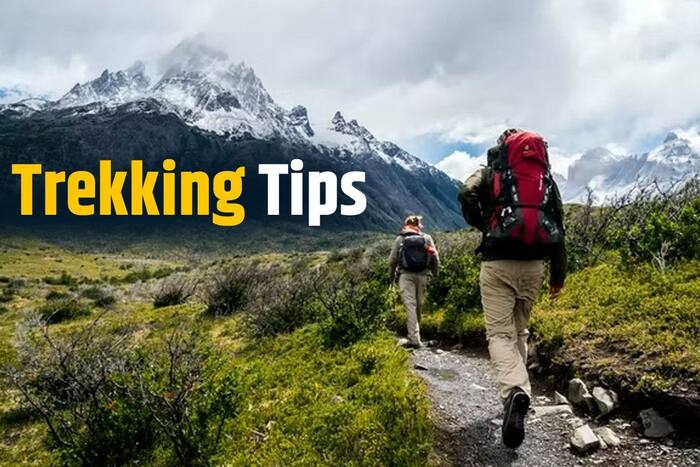If you are travelling to the hills chances there will be treks available there. It is one of the best experiences you’ll ever have as you will get a chance to explore the unexplored places. will be away from the hustle and bustle of the daily life and just enjoy the beauty of nature without any disturbances. Trekking broadens your horizons and challenges you, not only physically but in other ways too, as it often takes you out of your.
Here sharing some tips to make your trek experience a memorable one.
Before starting the Trek Preparation
Plan your Trek
For beginners always choose a trek route that’s reasonably easy and not too long. Choose a route with minimal elevation gain, which is to say one that’s reasonably flat so you don’t freak out your body and mind by tackling something overwhelming.
Get Physically Fit
Do exercises you enjoy. Build stamina and strength by walking, running, or hiking regularly in the weeks leading up to the trek.
Your energy requirements will increase while trekking, so it’s important to fuel your body well. Try to eat small, frequent meals while training to maintain your energy levels. If you are going for a long training walk, it’s essential to eat a well-rounded healthy breakfast and to drink plenty of water.
Pick a suitable climate and location
Check the weather conditions before choosing a trek. Start by picking a location that matches the climate condition to your preference. You should know when is a good season for a particular trek. Extreme weather conditions like heavy rainfall or extreme cold should be avoided.
Research the terrain
Check internet reviews, trail maps, and guidebooks for acceptable possibilities. These tips for trekking allows you to better prepare and provides a safer, more pleasurable hiking experience.
Pack Smart
Wear and carry breathable , light clothes – don’t wear cotton on a trek. Not t-shirts, not socks, not vests. Cotton absorbs too much of sweat/water and releases too little of it. It keeps the water to itself leaving you cold and miserable. keep Layers, rain gear, and comfortable, moisture-wicking clothing.
Trekking Shoes
Your shoes could make or break your trip. No other piece of equipment can impact your enjoyment of your trek more than your boots, so investing in comfortable trekking boots is highly recommended. We advise going to a gear shop to be fitted by an expert who will talk you through the range of boots on offer and find the best boot to suit your foot type.
Once you’ve bought your boots make sure you wear them as much as possible. They might feel a bit uncomfortable and stiff at first, but the more you wear them, the more they will mould to your foot. Start with short walks and build up to longer ones. It might take some time to wear them in, but it’s better you get blisters now rather than on your trip.
Back Pack
Make sure the backpack is not very heavy as then it will get difficult to walk after sometime. Backpack essentials incorporate a map, multi-tool, snacks, and hydration system. Don’t forget sun protection, a flashlight, and a whistle. A well-stocked first-aid kit is crucial, with bandages, antiseptic, pain relievers, and any personal medications. Proper gear ensures safety and comfort on the trail.
Use betadine solution to purify water. All you need to do is add 4 drops in one litre of water. Rest the water for half an hour. It kills most germs.
During the TREK
Carry the backpack appropriately
When carrying the backpack distribute the weight evenly placing heavier items closer to your back for better balance and comfort.
Follow Leave No Trace principles by minimizing your environmental impact: pack out all waste, dispose of it properly, and respect wildlife and natural habitats. Thoughtful packing ensures a more comfortable and eco-friendly trekking experience.
Try to start the trek Early in the Morning
Maximize daylight hours and avoid trekking in the dark. This will be helpful for first time trekkers.
Check your Pace
Finding your pace is crucial for an enjoyable mountain trek. A trekker must listen to their body and take regular rest days to avoid exhaustion. Maintain proper walking form by using efficient techniques for uphill and downhill trekking, which helps conserve energy and prevent injury.
Check Permits and Regulations
Once you have chosen a trail check for all the necessary permits and regulations required. Many popular trekking destinations require permits to help manage the number of visitors and preserve the natural environment. Check everything before hand before going forward.
Take breaks in between
Its always a good idea to keep taking breaks in between the trek so that you don’t get exhausted. Also keep enjoying your surroundings and the breath taking views during the trek.
Try to go with a Guide
The guide knows the way and it is always helpful when going trekking first time. Guided treks offer the advantage of local expertise, safety, and convenience, especially in unfamiliar or challenging terrains. Guides can also provide cultural insights and language assistance.
Consider using walking poles
We’d recommend you consider using trekking poles for your walk. Studies have shown that walking with poles can reduce the pressure strain on the opposite leg by approximately 20 percent (Dr. G Neureuther, 1981). Furthermore, while walking on an incline, poles reduce the body weight carried by the legs by approximately 8 kilograms (5 kilos on flat terrain).
Using poles also allows trekkers to lengthen their stride, putting less strain on their knees (American College of Sports Medicine Journal, 2001). Though it still may be an exhausting day on the trail, trekking poles can certainly make the long days easier and more enjoyable.
Respect the Nature
While on trek it is important that you do not litter around and always all your waste. Respect the nature for it to respect you back. Incase you encounter any wild animal stay at a distance from them . Research local wildlife to understand potential encounters and how to behave around animals. Knowing which animals inhabit the area and their behaviors can help you stay safe.
Conclusion
Trekking is a wonderful experience that connects you with nature and enjoy it. By following these tips you’ll be well on your way to unforgettable treks filled with breathtaking scenery and personal growth.
Go ahead with your first great trek!!

